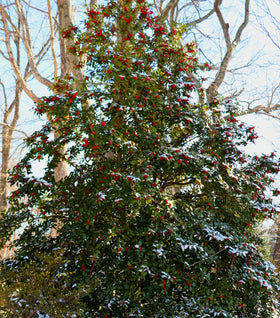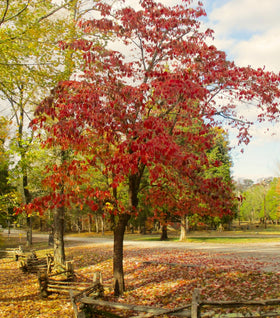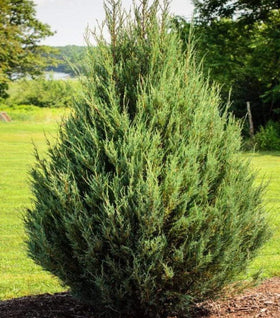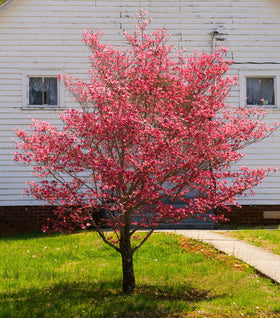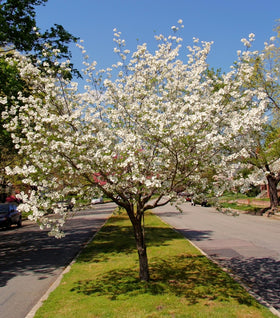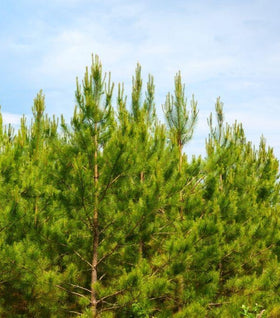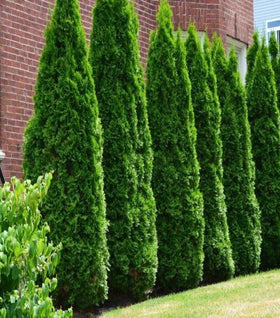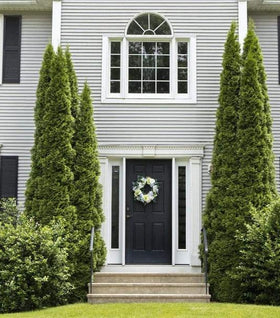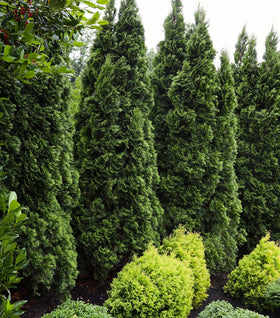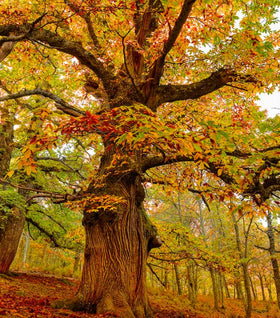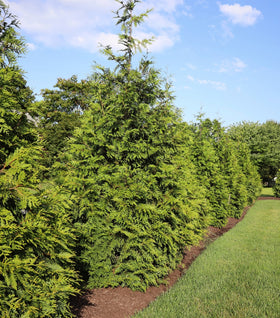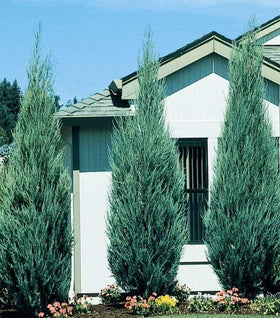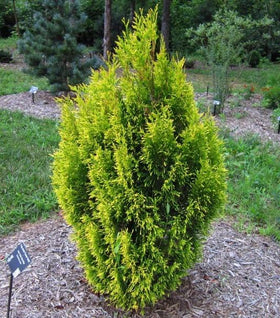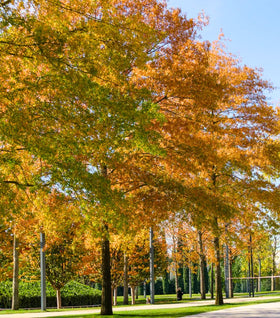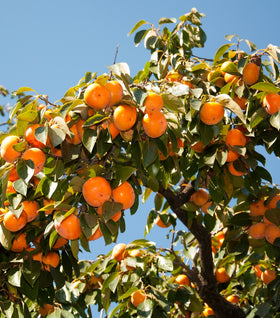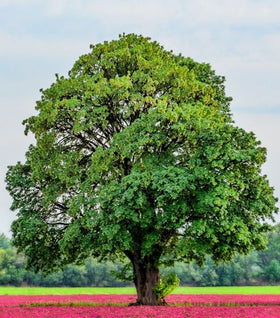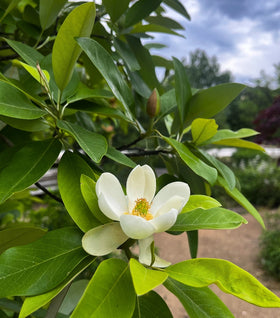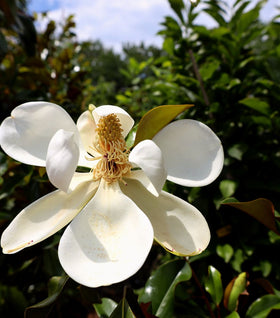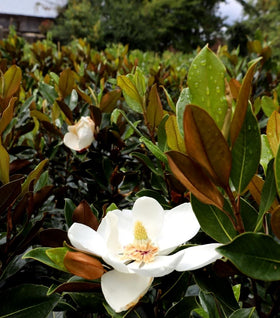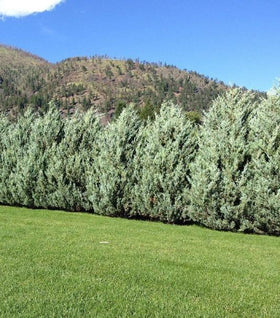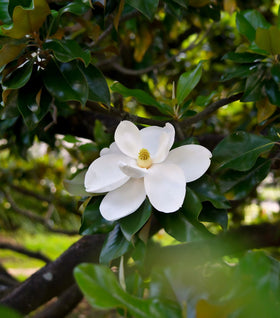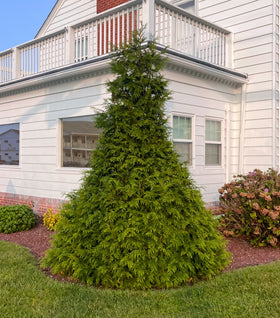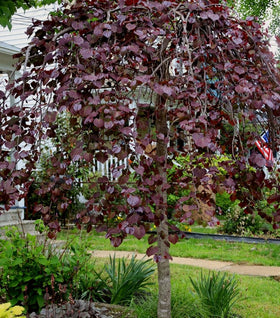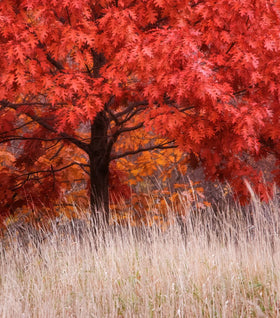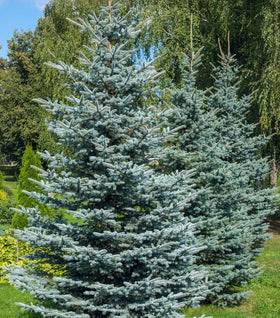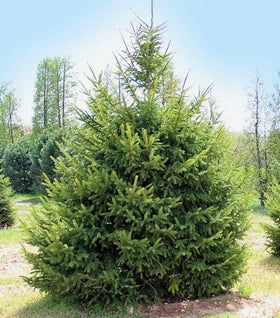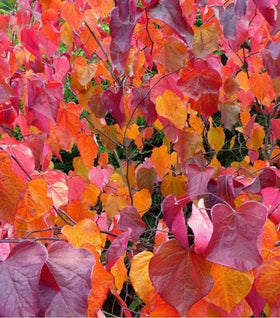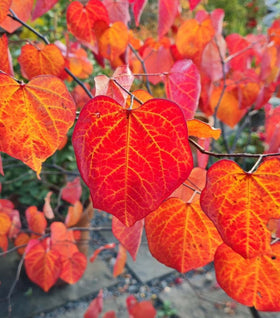Native Trees
Shop North American Native Trees for Wildlife, Shade & Year-Round Beauty
Planting native trees is the simplest way to build a healthier, more resilient landscape. Our selection—grown in our nursery and chosen for regional performance—supports pollinators, songbirds, and soil health while delivering the shade, privacy, and four-season beauty you want. From Red Maple and White Oak to Serviceberry, River Birch, and Eastern Redbud, these trees feel right at home from day one—and they’re backed by our We Grow Together Promise.
Native Trees—Beautiful Landscapes Built on Local Ecology
North American natives evolved alongside our climate, soils, and wildlife. That means better adaptability, fewer inputs, and genuine habitat value. Whether you’re creating canopy shade, defining property lines, or adding spring bloom, native trees bring a natural look that belongs in your yard.
Growth Habits & Seasonal Interest You Can Count On
Enjoy spring flowers from Redbud and Serviceberry, summer canopy from Maples and Oaks, exfoliating bark on River Birch, and fragrant blooms from Sweetbay Magnolia. Many natives offer stellar fall color and winter structure, ensuring your landscape performs in every season.
Functional Benefits—Shade, Stormwater Control & Wildlife
Deep, spreading root systems stabilize soil, slow runoff, and improve infiltration—essential for rain-soaked sites and slopes. Canopy trees cool homes and streets, while fruiting and mast-producing species feed birds and beneficial wildlife, enriching local biodiversity.
Maintenance & Durability Advantages
Once established, natives typically require less water and fertilizer than exotics. With right-plant/right-place selection, you’ll spend more time enjoying and less time troubleshooting. Annual mulching, occasional structural pruning, and deep, infrequent watering are usually all they need.
Eastern Redbud (Cercis canadensis)
A spring showstopper with magenta-pink blooms on bare branches, followed by heart-shaped foliage and golden fall color. Fast to establish, compact, and pollinator-friendly—perfect for front yards, mixed borders, or small-space accents.
Serviceberry / Juneberry (Amelanchier laevis)
Four-season native with white spring flowers, edible summer berries for birds, glowing fall color, and smooth, silver-gray bark in winter. Ideal as a multi-stem specimen for wildlife gardens and naturalized plantings.
Red Maple (Acer rubrum 'Brandywine')
Beloved for blazing scarlet fall color and adaptable roots that handle a range of soils. A quick-establishing shade tree that cools the yard, supports native insects, and anchors the landscape for decades with its gorgeous fall color.
River Birch (Betula nigra 'Dura-heat')
Textured, cinnamon-peeling bark steals the winter show, while airy foliage casts dappled summer shade. Thrives where others struggle—great for rain gardens, streambanks, and heavier soils.
A keystone native that supports more wildlife than almost any other tree—hosting hundreds of caterpillar species and feeding birds with nutrient-rich acorns. Stately, long-lived shade with classic, wine-red fall color.
Sweetbay Magnolia (Magnolia virginiana)
Fragrant, creamy blooms in late spring and glossy, semi-evergreen leaves bring elegance with true native toughness. Handles moisture and coastal conditions, attracting pollinators and providing soft screening.
Blackgum / Tupelo (Nyssa sylvatica)
A shimmering green summer canopy turns brilliant red in the fall. Deep-rooted, storm-resilient, and long-lived, its late-season nectar and fruit support bees and birds when resources are scarce.
Eastern Red Cedar (Juniperus virginiana)
Durable, drought-tough evergreen for 365-day structure, privacy, and wind protection. Blue berry-like cones feed songbirds, while dense, aromatic foliage offers reliable cover and year-round habitat.
Bring your landscape to life with natives that truly belong. Each of these nursery-grown native trees delivers real ecological value, supporting pollinators, feeding songbirds, stabilizing the soil, and thriving with less water and fertilizer once established. Plant with confidence knowing every tree is zone-tested, carefully packed, and backed by our"We Grow Together" Promise.







